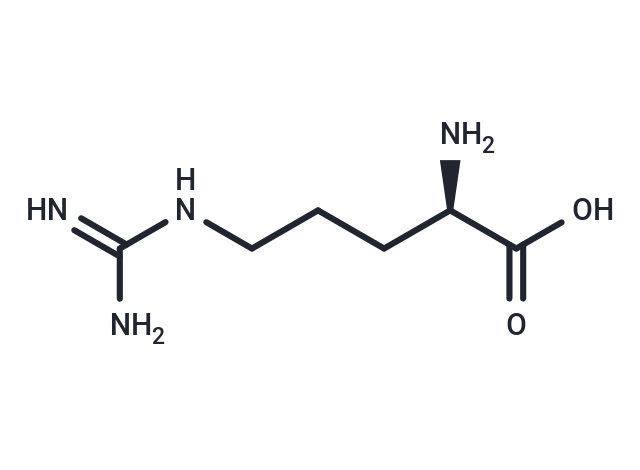Shopping Cart
Remove All Your shopping cart is currently empty
Your shopping cart is currently empty
D-Arginine is the D-isomer and inactive form of L-Arginine.D-Arginine is an endogenous metabolite and inhibitor of EC 4.1.1.19 (arginine decarboxylase), has broad-spectrum toxicity to microorganisms, and acts as a regulator of microbial subpopulations.

| Pack Size | Price | USA Warehouse | Global Warehouse | Quantity |
|---|---|---|---|---|
| 1 g | $29 | - | In Stock |
| Description | D-Arginine is the D-isomer and inactive form of L-Arginine.D-Arginine is an endogenous metabolite and inhibitor of EC 4.1.1.19 (arginine decarboxylase), has broad-spectrum toxicity to microorganisms, and acts as a regulator of microbial subpopulations. |
| In vivo | In male albino mice, D-Arginine was administered via intraperitoneal injection (700–1400 mg/kg; single dose) to evaluate the effects on the central nervous system and toxicity. At 700 mg/kg, D-Arginine exhibited central excitatory effects, while at 1400 mg/kg, D-Arginine produced central depressant effects, including prolonged barbiturate-induced sleep and significant anticonvulsant activity against pentylenetetrazole-induced seizures. The LD₅₀ was determined to be 2800 mg/kg, and pretreatment with propranolol (2 mg/kg) or betamethasone (0.5 mg/kg) increased the LD₅₀ to 3600 mg/kg and 3300 mg/kg, respectively. [1] |
| Synonyms | H-D-Arg-OH |
| Molecular Weight | 174.2 |
| Formula | C6H14N4O2 |
| Cas No. | 157-06-2 |
| Smiles | C(CCNC(=N)N)[C@H](C(O)=O)N |
| Relative Density. | 1.2297 g/cm3 (Estimated) |
| Storage | keep away from moisture | Powder: -20°C for 3 years | In solvent: -80°C for 1 year | Shipping with blue ice/Shipping at ambient temperature. | |||||||||||||||||||||||||||||||||||
| Solubility Information | H2O: 20 mg/mL (114.81 mM), Sonication is recommended. | |||||||||||||||||||||||||||||||||||
Solution Preparation Table | ||||||||||||||||||||||||||||||||||||
H2O
| ||||||||||||||||||||||||||||||||||||
| Size | Quantity | Unit Price | Amount | Operation |
|---|

Copyright © 2015-2025 TargetMol Chemicals Inc. All Rights Reserved.